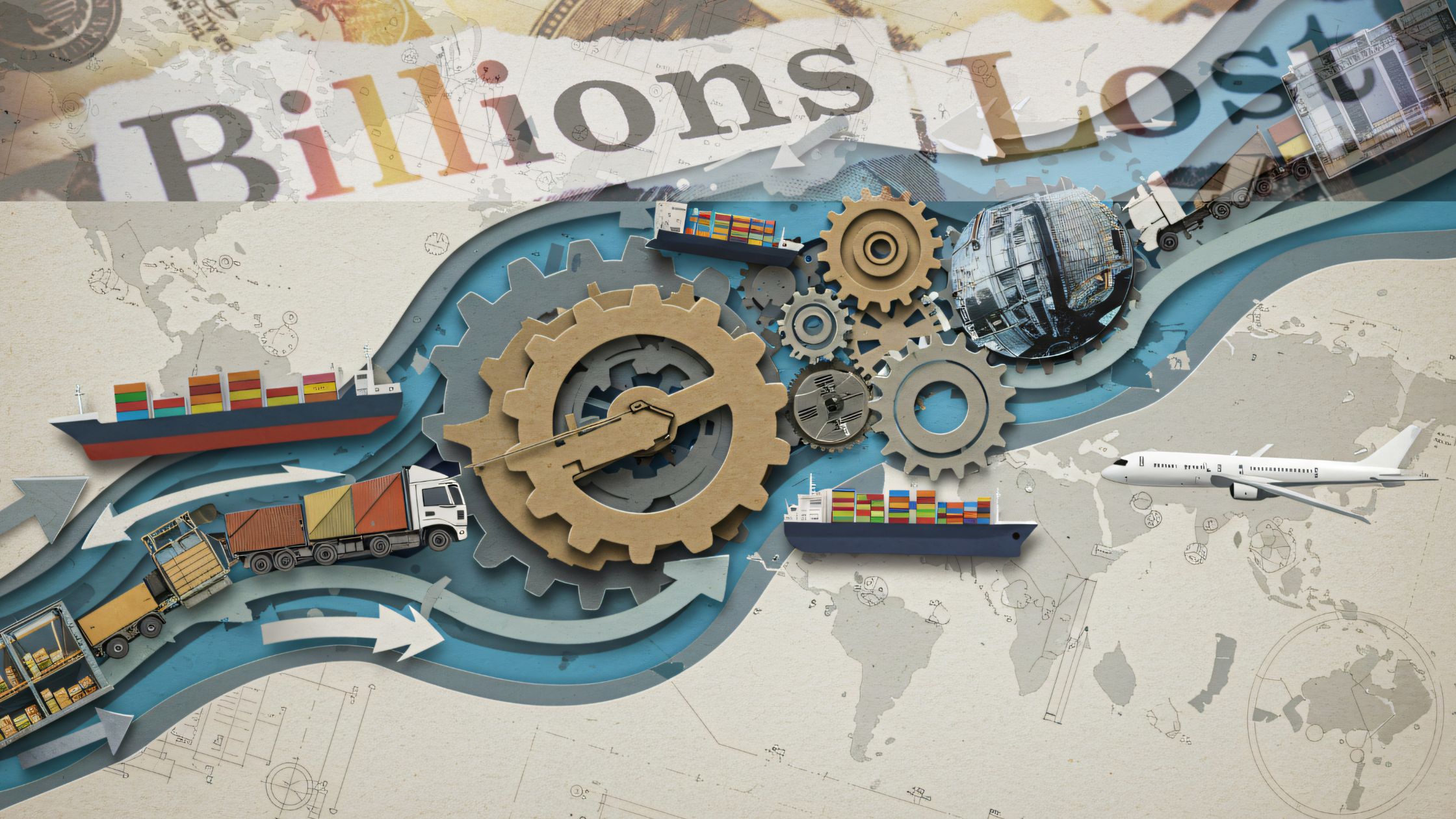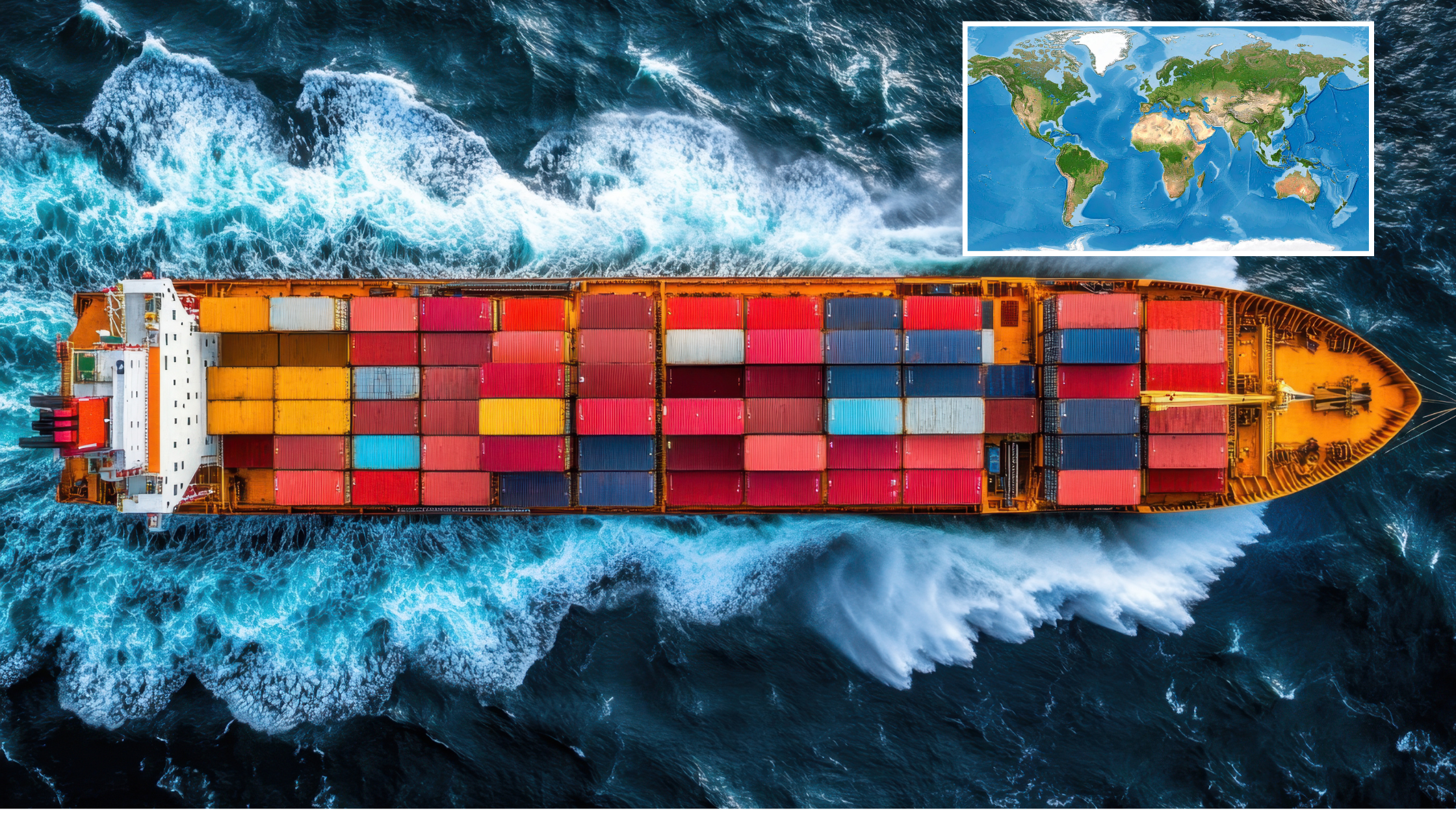Smart Warehousing

By , 30 October 2025 22:14
Adaptive AI Supply Chain

Introduction: The Modern Supply Chain Puzzle
In the early years of industrial manufacturing and distribution, supply chains functioned on relatively predictable schedules, often supported by spreadsheets, rudimentary software, and manual oversight. Companies placed large orders, stored inventory for extended periods, and relied on stable shipping lanes with minimal unexpected disruptions. Over time, the global economy became more dynamic: e-commerce boomed, consumer demands skyrocketed for same-day deliveries, and markets grew increasingly competitive. Then came a series of events—pandemics, geopolitical disruptions, labor shortages, and volatile consumer behaviors—that blew away any illusion of predictability.
Where does that leave businesses today? Supply chain management is no longer just about cost-cutting or lean operations; it’s about business continuity, competitive advantage, and rapid adaptation. A single port closure, a regional lockdown, or a critical supplier default can reverberate through an entire network, causing ripple effects that last for months. Traditional software solutions—rooted in static logic, manual forecasting, and disjointed processes—struggle to respond effectively in real time.
Enter Adaptive AI Supply Chain Orchestration, a forward-thinking approach that goes beyond simply digitizing or automating processes. In an adaptive system, every node in the supply chain—warehouses, transportation fleets, suppliers, retail endpoints—feeds data into machine learning models that perpetually adjust based on evolving conditions.
Why is it crucial to discuss this now?
Because the velocity of change in global markets has forced supply chain leaders to seek a deeper, more proactive stance on optimization. Today’s environment demands advanced capabilities: real-time analytics, predictive modeling, and the capacity to enact decisions autonomously. This approach moves beyond “business intelligence dashboards” that tell managers what happened last quarter. Instead, it focuses on orchestrating every component with intelligence that learns and adapts—much like how a skilled conductor coordinates each musician in an orchestra to maintain harmony despite unexpected changes.
The Growing Complexity of Global Logistics
Supply chains have always been complex, but complexity itself has mutated into something far more challenging over the last decade. It’s not just that there are more products, more SKUs, and more markets—although that’s part of it. The nature of demand has changed. Customers today expect personalized, rapid service, fueling trends like “micro-fulfillment centers” near dense urban areas, just-in-time deliveries, and increasingly fragmented last-mile logistics.
Simultaneously, the volatility in the supply side has grown exponentially. Consider raw materials that may come from multiple continents, sub-assemblies that require specialized labor, or sensitive goods needing temperature control. A single container stuck at a congested port can disrupt manufacturing lines thousands of miles away. Meanwhile, the political and environmental landscape adds further stress: shifting trade policies, sanctions, climate change–induced natural disasters, and sudden labor strikes test a supply chain’s resilience.
E-commerce has upended traditional distribution channels. Consumers shopping on major online platforms expect deliveries within days—if not hours. The complexity intensifies when a seller might choose to split an order between multiple warehouses, each with different inventory levels, shipping carriers, or labor availability. On top of that, free returns policies drive up reverse logistics, requiring companies to handle inbound shipments of used or partially damaged goods just as efficiently.
In such a scenario, older software systems reliant on static assumptions about lead times, reorder points, or average shipping delays cannot keep up. They’re often coded with if-else logic that performs well under “normal” conditions but falters when confronted with anomalies, like a surge in demand triggered by a viral social media post. Rather than recalculating in real time, these systems might adjust once a week or once a month—creating prolonged mismatches in inventory and labor planning.
Moreover, the silos within organizations themselves exacerbate the problem. It’s not unusual for the transportation management system (TMS) to operate independently from the warehouse management system (WMS) or for the purchasing department to use spreadsheets that never integrate with the rest of the ERP environment. This fragmentation leads to poor visibility, where one department might see that shipments are delayed, but another remains unaware until it’s too late to adjust production schedules or labor allocations.
When we talk about global logistics in the 2020s, we’re speaking of a sprawling web of factories, cross-docks, distribution centers, and digital storefronts, all under constant flux. Managers no longer have the luxury of meticulously planning every move in a stable environment. Instead, they need systems that can sense changes—in demand, lead times, labor capacity—and automatically recalibrate strategies in near real time.This is where the concept of Adaptivity emerges. Rather than relying solely on predetermined, rule-based workflows, a modern supply chain must continuously evaluate real-time conditions to propose dynamic solutions. That might mean rerouting a shipment around severe weather, automatically reassigning workers from one task to another based on updated order volumes, or recalculating safety stock levels when a key supplier signals a potential delay. These capabilities lie at the heart of the Adaptive AI Supply Chain Orchestration framework we’ll examine throughout this post.
The Rise of AI and Machine Learning in Operations
It’s no secret that AI and machine learning (ML) have revolutionized how we interact with technology, from personalized recommendations on streaming services to advanced image recognition algorithms. Yet, supply chain and logisticsoperations—once considered primarily mechanical or manual processes—are increasingly recognized as prime fields for AI adoption. Why? Because supply chains generate vast amounts of data at every step: purchase orders, shipping manifests, sensor readings, warehouse transactions, driver logs, customer preferences, returns reasons, and so on.
The shift toward AI in operations is driven by several converging factors:
- Data Availability
- Modern operations involve countless touchpoints, each capturing digital footprints. Warehouses track item movements via RFID tags or IoT sensors, while retail channels gather consumer data in real time. Cloud computing has enabled organizations to store and process these massive datasets more cost-effectively than ever before.
- Computational Power
- The rise of GPUs and distributed computing frameworks (Spark, Hadoop) means large-scale ML algorithms—like deep reinforcement learning or neural networks—can process billions of data points rapidly. The computational bottleneck that existed a decade ago is much less of a constraint today.
- AI Algorithmic Advancements
- In the last decade, breakthroughs in deep learning, natural language processing, and reinforcement learning have moved from academic labs to real-world deployments. Reinforcement learning, for instance, is especially interesting for supply chain orchestration because it involves an AI agent learning an optimal policy through trial and error—much like the complexities of dynamic route planning or real-time scheduling.
- Business Imperatives
- As the cost of disruptions grows, companies see AI as a strategic investment rather than a fancy experiment. They realize that near-instant decision-making—based on real-time data—could mean the difference between fulfilling orders on time or losing customers to faster-moving competitors.
- Cultural Shift
- Technology leaders, from big e-commerce players to robotics startups, have set new performance benchmarks in the logistics world. Their success with automated fulfillment centers, self-learning inventory optimization, or autonomous route planning has demonstrated AI’s potential. Companies that resist adopting AI risk falling behind the innovation curve.
Moreover, AI doesn’t just replace older systems; it fundamentally enhances them. Traditional optimization software might rely on linear programming models or heuristics that assume relatively stable parameters. In contrast, AI can incorporate uncertainty directly, updating its internal models as new information arrives. This is vital when shipping lanes shut down unexpectedly or a viral marketing campaign causes demand spikes in a particular region. Instead of requiring a human to reconfigure the system, AI can autonomously test multiple “what-if” scenarios and propose the best course of action.
Machine learning is particularly adept at pattern recognition in high-dimensional data. It can detect anomalies in inbound supply quality that might hint at future defects, or it can forecast which products will be in higher demand next week based on real-time consumer sentiment. When integrated into supply chain orchestration, these capabilities enable systems to move beyond reactive frameworks, gleaning insights and executing strategies that are more accurate, efficient, and adaptive.Yet, simply implementing AI in some isolated pockets—like adding a forecasting module or a route optimization engine—often falls short. To truly reap the rewards, organizations must architect their supply chain as an adaptive ecosystem, where AI influences end-to-end decisions, from procurement to last-mile delivery. This leads us to the notion of Adaptive AI Supply Chain Orchestration, an integrated framework that ensures AI’s intelligence is utilized at every juncture of the logistics journey, bridging silos and automating adjustments faster than any human-driven system could manage.
Defining ‘Adaptive AI Supply Chain Orchestration’
With the rapid uptake of AI in various business domains, many terms have surfaced: “digital supply chain,” “Industry 4.0,” “smart logistics,” and more. While these labels capture aspects of technology transformation, they don’t necessarily convey the adaptive nature required to respond to continual change. This is where the concept of Adaptive AI Supply Chain Orchestration stands apart, highlighting two pivotal aspects:
- Adaptivity : In an adaptive system, decisions aren’t made once and then left on autopilot. Instead, the system perpetually learns from new data, reevaluates its assumptions, and refines its strategies. This is especially crucial in logistics, where conditions can shift daily or even hourly. One day, a particular carrier route might be optimal; the next day, road closures or cost changes might render it suboptimal. An adaptive system detects these shifts and recalculates routes on the fly.
- Orchestration : Orchestration speaks to end-to-end coordination. Traditional supply chains often isolate planning, scheduling, and execution in siloed applications. For instance, the warehouse management system might optimize picking orders, while the transportation management system focuses on route efficiency, and the demand planning software churns out forecasts once a week. Orchestration harmonizes these functions so that changes in one area (e.g., a sudden demand spike in demand planning) instantly trigger updates or re-optimizations in others (like workforce allocation, inventory positioning, or shipment scheduling).
In simpler terms, Adaptive AI Supply Chain Orchestration unites these elements into a single coherent framework. Rather than chasing one-off improvements (like a better forecast or a more efficient picking algorithm), it focuses on how every node and function across the supply chain works in concert, adjusting simultaneously based on shared, real-time intelligence.
Four Core Pillars often define this orchestrated approach:
1) Real-Time Data Integration: Continuous data streams from IoT sensors, ERP systems, sales channels, and supplier portals feed into a central data lake or platform. AI models rely on up-to-date information, ensuring decisions reflect the latest reality.
2) Self-Learning Algorithms: These algorithms (reinforcement learning, predictive analytics, or advanced optimization models) continuously improve as they process feedback. Over time, they grow more accurate, discovering patterns in demand fluctuation, inventory turnover, or route performance.
3) Dynamic Execution: Orchestration implies near-instant action. If data indicates a carrier is delayed by six hours, the platform might automatically reassign shipments or push notifications to the distribution center to stagger labor shifts. Humans remain in the loop for oversight but are relieved from manually crunching every scenario.
4) Holistic Visibility & Collaboration: Departments and partner organizations share a unified interface that shows the state of the supply chain in real time. Production managers see inbound shipment statuses; warehouse leads see demand forecasts; logistics coordinators see inventory levels across global DCs. The synergy drives faster, better-informed decisions.
When well-implemented, an adaptive orchestrator doesn’t just “manage” processes. It guides them, anticipating disruptions and adjusting strategies proactively. It’s akin to having an ever-watchful air traffic controller that not only sees every plane in the sky but also predicts turbulence, reroutes flights preemptively, and coordinates runway schedules seamlessly—all while learning from each incident to continually refine its approach. That’s the power behind the concept we call Adaptive AI Supply Chain Orchestration.
Core Building Blocks: From Data Pipelines to Reinforcement Learning
Constructing an Adaptive AI Supply Chain Orchestration framework demands several critical building blocks. Think of them as interlocking puzzle pieces that, once assembled, enable self-learning, real-time decision-making, and end-to-end optimization. Each piece is vital; missing any one of them weakens the entire system.
1. Data Infrastructure & Pipelines
No AI system can function effectively without a robust data backbone. This includes:
- Integration Layer: Connects with legacy ERPs, warehouse management systems, e-commerce platforms, sensor networks, and partner APIs.
- Data Lake or Central Repository: Stores structured, semi-structured, and unstructured data. Technologies like Hadoop, Spark, or modern cloud data warehouses (Snowflake, BigQuery) are popular choices.
- Real-Time Event Processing: Tools like Kafka or Amazon Kinesis handle streaming data, allowing the system to respond to events (orders, sensor readings, shipping updates) as they occur.
2. Advanced Analytics & Machine Learning
Core to adaptation is the ability to process vast amounts of data and extract actionable patterns:
- Forecasting Models: Using time-series analysis, neural networks, or hybrid ML approaches, the system predicts demand fluctuations, lead times, or resource requirements.
- Recommendation Engines: Suggest optimal inventory levels, picking routes, or shift schedules, akin to how consumer websites recommend products but tailored to operational parameters.
- Reinforcement Learning: This approach is especially potent in dynamic environments. An RL agent iteratively explores possible actions (reconfiguring pick paths, adjusting reorder thresholds) and learns which lead to the highest reward (improved throughput, lower costs, better service levels).
3. Optimization & Simulation Engines
Complex supply chain challenges often require advanced optimization:
- Linear & Mixed Integer Programming: Traditional methods still excel at certain large-scale scheduling or routing problems.
- Heuristic & Metaheuristic Approaches: Genetic algorithms, simulated annealing, or taboo search can be employed for tasks like multi-depot routing or intricate shift scheduling.
- Simulation Tools: Digital twins—virtual replicas of a warehouse or distribution network—allow the system to test different strategies virtually before implementing them. Coupling these simulations with ML accelerates learning, as the AI can iterate through thousands of “what-if” scenarios quickly.
4. Workflow & Rule Orchestration
To be adaptive, the system needs:
- Decision Automation: When forecasts predict a 30% surge in demand tomorrow, the orchestration layer triggers workforce scheduling changes automatically.
- Human in the Loop: Critical decisions, like approving emergency supplier routes with higher costs, may still require managerial input. The platform should seamlessly facilitate these escalations.
5. User Interface & Collaboration Tools
All the advanced analytics in the world won’t matter if operators and stakeholders can’t interpret insights or act on them. Key UI features might include:
- Real-Time Dashboards: Visualizing current order volumes, shipments, inventory positions, and alerts.
- Proactive Alerts: Automated notifications for anomalies (e.g., temperature excursions in cold-chain logistics) or performance dips (e.g., picking speed dropping below threshold).
- Collaboration Modules: Team messaging, annotation on dashboards, and shared KPIs keep cross-functional alignment.
6. Continuous Learning & Feedback Loops
Finally, an adaptive system must systematically ingest new outcomes:
- Feedback from Execution: Once a recommended route or labor assignment is carried out, the actual performance data (did it reduce lead time?) is fed back into the model.
- Iterative Improvement: The system refines future recommendations, gradually closing the gap between predicted and actual outcomes.
When these six building blocks operate cohesively, you have more than just an improved supply chain—you have a self-evolving, orchestrated network. Over time, the synergy of AI-driven insights, robust optimization, and streamlined execution fosters resilience, agility, and cost-efficiency, forming the bedrock of Adaptive AI Supply Chain Orchestration.
Recent Posts

Billions Spent on Supply Chain Tech, Yet Warehouses Still Run on Yesterday’s Logic

3 Signs Your Warehouse Operations Are Ready for a Digital Upgrade
